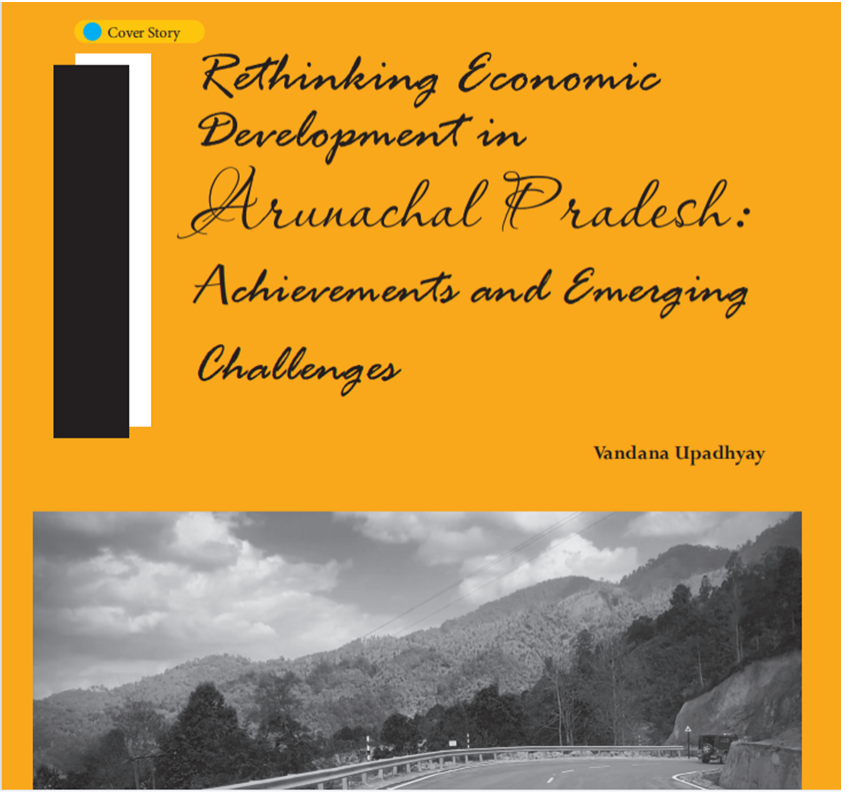
Over the last few decades, the state of Arunachal Pradesh has crossed a long journey, in a comparatively short period of time. Today’s Arunachal Pradesh stands between the legacy of an ancient civilization and the promising horizons of a boundless future. This moment is, in fact, appropriate to reflect upon the journey covered so far. Celebration of the journey, in its true spirit, does not lie in the uncritical celebration of milestones and achievements, but real appreciation of the progress made so far can be made through a dispassionate analysis of gaps, failures and alternative possibilities. This short write-up cannot possibly do justice to the many important facets of the fascinating journey of Arunachal Pradesh in different spheres. Hence, only some aspects of the state’s experience are being selectively highlighted in an effort to outline some of the achievements and significant challenges lying ahead.
A Brief Overview of the State
Arunachal Pradesh situated in the eastern most corner of North East India is a heterogeneous tribal state characterized by extraordinary ethnic, cultural, religious and linguistic diversity. This predominately hilly state with an area of 83, 743 sq.km is the largest state among the Northeastern states of the country. Area wise Arunachal Pradesh is 32.83 per cent of the North East and around 6.76 per cent of India as a whole. It forms a complex hill system of Shivalik and Himalayan origin and is criss-crossed by numerous rivers and streams. The state shares a total of 1630 kms of international boundary with neighboring countries; 1030 kms with China, 160 kms with Bhutan and 440 kms with Myanmar. The McMohan line defines the international boundary between India and China. Administratively, the State is divided into Twenty Six districts. The Capital of the State is Itanagar in Papum Pare district. This sparsely populated state has a very low density of 17 people per sq km according to the 2011 census. Arunachal Pradesh is a fascinating state which is inhabited by 26 major tribes and more than 100 sub-tribes, each having their distinct culture, dialects and customs.
Prior to the attainment of Statehood in 1987, Arunachal Pradesh was known as the North Eastern Frontier Tracts. It was in 1954 that it was renamed as North Eastern Frontier Agency (NEFA) and it was finally in 1972 that NEFA was given the status of a Union territory. The constitutional development in the state provided the administrative mechanism for achieving sustained development. The initiation of the process of development in the state is thus a recent one, having unfolded in the years following independence of the country in 1947. Prior to that the area was administered indirectly with the people enjoying a fair degree of autonomy in their villages and localities. The village or a group of villages bound by Kinships/Clanship/Community enjoyed a considerable degree of autonomy.
In Arunachal Pradesh modernization is a post-independence phenomenon, beginning in slow but assured steps with the establishment of direct administrative structure in the state (Luthra, 1993). The establishment of institutional infrastructure in a hilly and sparsely populated region with a lot of inter-tribal differences was indeed a gigantic task. The problem was aggravated due to the operation of Inner Line Permit (ILP), which restricted the entry of non-locals into the state. The ILP was enacted by the British Indian Government in 1873 and continues to be in force. As per the provisions of this Act, people from other parts of the country cannot enter the state without a valid inner line permit issued by the government. They also cannot own any fixed assets in the state. Further the induction of the cash economy in the region released the forces of institutional dynamics, which resulted in far-reaching changes and thus integrated the hitherto insular economy with the national economy. The most visible changes came into the institution of ownership, especially land.
Economic Growth
To read the further articles please get your copy of Eastern Panorama March issue @http://www.magzter.com/IN/Hill-Publications/Eastern-Panorama/News/ or mail to contact @easternpanorama.in

